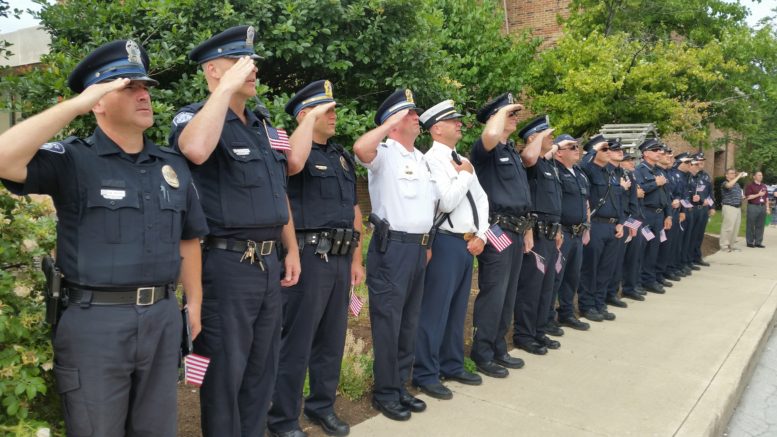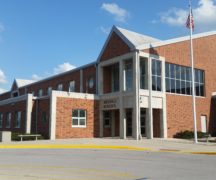By JAN LARSON McLAUGHLIN
BG Independent News
Bowling Green Police Division has seen a steady increase in community relations efforts, and a decrease in force being used by officers, according to Chief Tony Hetrick.
Hetrick presented an annual report during a strategic planning meeting with City Council on Saturday.
“We don’t police the community. We police for the community,” Hetrick said.
Poor police-community relations nationwide peaked the last few years, causing several police departments to examine their relationships with those they serve.
“Community engagement is a hot button topic all over the nation,” Hetrick said. That’s something Bowling Green Police Division has done for years, but they are also making an increased effort. “We can always do better.”
Last year the “Coffee with a Cop” program started, efforts are being made to engage with BGSU students more, and police participated in a panel discussion on minority relations. Police also met with students in a class teaching English as a second language.
“It really helped us build trust with them,” Hetrick said.
In August, when new international students arrive at BGSU, the police will meet with the group again.
“I think we enjoy tremendous trust in the community,” Hetrick said.
The chief also presented his annual report on police force being used. In 2016, there were 21 responses to resistance or aggression reports filed by office. That is a decrease from the 40 reports in 2015.
The officers’ reports showed that in 19 cases, no weapons were used. In two cases, Tasers were used. According to the reports, there were no incidents when officers used firearms, batons or pepper spray in 2016.
The incidents requiring force were primarily dealing with cases of disorderly conduct and intoxication. Others involved suicide attempts, mental illness, warrant service, domestic violence, escape and assault. Force was used on white males the most, followed by white females. No other race was reported.
Hetrick said his review of the reports showed no force being used outside division policy guidelines.
“There was no pattern detected where officers are applying force in excess or inappropriately,” he said.
Hetrick also said the drop in use of force by Bowling Green police does not appear to be a result of agency practices.
“It appears that there were less pronounced willingness to resist officers when a suspect was confronted for a violation of law coupled with lower overall calls for service,” the chief wrote in his report. “The Bowling Green Police Division stresses de-escalation and taking time to resolve potentially hostile situations. Those policies are helping to keep use of force numbers extremely low.”
In the last five years, officers have not had to use their firearms. During that same period, they used Tasers 23 times, batons two times, and pepper spray 19 times.
Hetrick also presented a review on biased based profiling by the police division.
“The Bowling Green Police Division is committed to treating all citizens fairly with respect and courtesy,” the report states, adding that bias based profiling in traffic contacts, field contacts and in asset seizures is prohibited.
Reviews are performed on traffic stops, other public contacts, and of phone conversations to ensure professionalism and a lack of bias.
The statistics for criminal and traffic cases did show a higher percentage of African-Americans being warned or cited than the African-American population in the city. Twenty percent of the criminal warning and arrests involved African-Americans, and 15 percent of the traffic warning and citations involved African-Americans. Those numbers compare to the 2010 city census showing 6.4 percent of its population being black, and the 2016 BGSU enrollment showing 10 percent are African-American.
Hetrick said those numbers are not due to racial profiling, but are likely due to non-residents coming to Bowling Green. “BG has a pretty active night life,” he said. “That is where the majority of our criminal activity comes from.”
Also during the strategic planning meeting, the chief suggested that the city should explore a reverse 911 system that allows calls to go out to the masses in emergency cases such as a missing child or waterline break.





